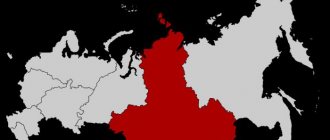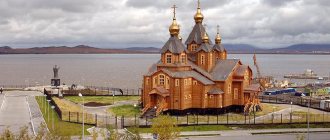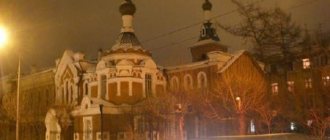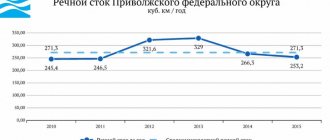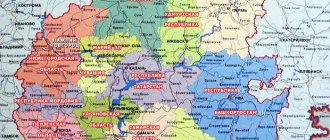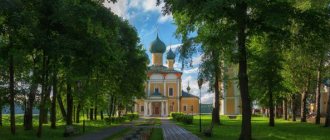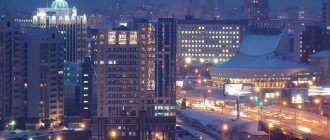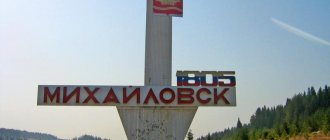The Northwestern Federal District consists of eleven constituent entities of the Russian Federation. It was formed on May 13, 2000, the administrative center is the federal city of St. Petersburg.
Map and list of subjects of the Northwestern Federal District
1 Kaliningrad region, 2 Pskov region; 3 Novgorod region, 4 St. Petersburg, 5 Leningrad region, 6 Republic of Karelia, 7 Murmansk region, 8 Vologda region, 9 Arkhangelsk region, 10 Nenets Autonomous Okrug, 11 Komi Republic.
What holiday is it today?
December 16, 2021, Thursday
Today are holidays, events: Events that happened on December 16 in the world, in different years Tomorrow: Day of Strategic Missile Forces Day of Employees of the State Courier Service Memorable date in the military history of Russia: Capture of the Ochakov fortress in 1788
Today is the Orthodox holiday of the Prophet Zephaniah. Reverend Savva of Storozhevsky, Zvenigorod. Martyr Angelis... Tomorrow: Great Martyr Barbara and Martyr Juliania of Iliopolis. Venerable John of Damascus...
Today is a national holiday: Day of World Silence and Silence... Tomorrow: Barbarian Day...
Seasons
Seasons, four periods of the year (spring, summer, autumn and winter) characterized by certain average temperatures. The period during which the Sun passes through one of these sectors is called the season. Spring in the Northern Hemisphere and autumn in the Southern Hemisphere begin when the Sun passes through the initial circle of declination and its right ascension is 0° (vernal equinox). Summer in the Northern Hemisphere and winter in the Southern Hemisphere occur when the sun's right ascension is 90° (summer solstice). Autumn in the Northern Hemisphere and spring in the Southern Hemisphere begin when the sun's right ascension is 180° (autumnal equinox). The beginning of winter in the Northern Hemisphere and summer in the Southern Hemisphere is considered to be the winter solstice, when the direct ascension of the Sun is 270°... Next: Seasons. Russian folk calendar. Monthly words...
Notes
- ↑ 1,01,1 On July 28, 2021, by decree of the President of Russia (No. 375), they were included in the Southern Federal District.
- ↑ 2,02,1 November 3, 2021, by decree of the President of Russia (No. 632), included in the Far Eastern Federal District
| [ + ] Russia | |
| Armed forces | Army (armed forces modernization) • Armaments • (infantry weapons • military equipment • aviation • armored vehicles • T-14 tank) • Navy • Military districts |
| Symbolism | Coat of Arms of Russia • Flag of Russia • Motto of Russia • Anthem of Russia • Ribbon of St. George • National symbols of Russia |
| Story | Rulers of Russia • The myth of the centuries-old backwardness of Russia • Changes in borders (territorial disputes) • The future of Russia • Reform of the Constitution of Russia (chronology • text of amendments • voting) |
| Economy | Major projects • Industry • Agriculture • Electric power industry • Tourism • Food security • Import substitution • Russian products • Leading companies |
| Finance | Russian ruble • Exports • Salaries and incomes • Pensions • Standard of living • Taxes • Deoffshorization • Shadowization |
| Transport | • Transpolar Highway • Northern Sea Route • Seaports (access to the ocean) • Airports • SSJ 100 |
| Technologies | Inventions • High-tech products (new developments) • Defense • Aviation industry • Space • Atom (nuclear energy) • Shipbuilding • Automotive industry • Engine building • IT sector (microprocessors • smartphones) • Robotics • Oil industry |
| Medicine | Medicine • Pharmaceuticals • Vaccination |
| Demography | Emigration • Social policy (maternity capital) • Human capital |
| Achievements | Areas of Russia's leadership • Russia ranks first in the world • Russian records • Tsar-things • Russian sports |
| Culture | Music and songs about Russia • Poems about Russia • Poems about war • Quotes about Russia • Russian language (proverbs and sayings) • Russian character • The best modern films about Russia • The future of Russia in science fiction • Achievements of Russian culture ( modern achievements • new churches • restored monuments • lost monuments) • Cultural policy • Putin style |
| Regions and cities | Regions of the Russian Federation (geostrategic regions) • Cities (centers of economic growth • hero cities • cities of military glory • historical settlements) • Federal districts • Economic regions • Macroregions • Russian Arctic • Symbols of regions |
Folk calendar about every day
Every day one season always replaces another and this determines a person’s way of life. In connection with this, a folk calendar was formed in which there were practically no nameless, unmarked days. Every day was special, had its own purpose. All this was determined by climate conditions and astrological phenomena.
A calendar is a system for counting periods of time. The first calendars arose a long time ago, in ancient times, because there was a need to measure time. The word calendar comes from the Latin words caleo - to proclaim and calendarium - debt book. This is due to the fact that in Ancient Rome the beginning of each month was especially proclaimed, and because it was customary to pay debts on the first day of the month. Different peoples counted time differently. Some calendars are based on the changing phases of the moon - lunar calendars; in others - the change of seasons - sunny; in others, the length of the year was coordinated with the change of seasons, and the counting of months was associated with the phases of the Moon. Such calendars are called lunisolar.
In Rus', the calendar was called a monthly calendar. Every day, the month book covered the entire year of peasant life, “describing” day by day, month after month, where each day had its own holidays or weekdays, customs and superstitions, traditions and rituals, natural signs and phenomena. The cyclical nature of the calendar is reminiscent of human life, where spring is youth, summer is heyday, autumn is the time of harvesting fruits (it’s good if there are some, otherwise you can live your life without collecting fruits), winter is the time of wisdom and peace. This cyclicality and rhythm determined the way of life of the farmer. The folk calendar was an agricultural calendar, which was reflected in the names of the months, folk signs, rituals and customs. Even the determination of the timing and duration of the seasons is associated with real climatic conditions. Hence the discrepancy between the names of the months in different areas... Next: Folk calendar...
Tourism in the Northwestern Federal District
The Northwestern Federal District is extremely interesting from the point of view of tourism, although it is worth noting that its development is not carried out in all regions, and in some regions it is rather poorly developed due to inaccessibility. The leaders are the Republic of Karelia, Murmansk, Pskov, Novgorod, Leningrad, Arkhangelsk and Vologda regions. In this case, St. Petersburg can be left out of the equation; its leadership is undeniable.
However, the potential for tourism development is very large; the question is the development of transport infrastructure and investment in the industry. There are interesting places for tourists in every region of the district; this includes both architectural monuments and numerous natural attractions. Everything is good from the point of view of hunting and fishing.
Fishing calendar for every day
The fishing calendar should not be taken as an absolutely indisputable truth. Fish biting is greatly influenced by a whole range of natural factors, as well as the influence on the nature of man himself. You must not forget that the fish’s bite depends and is determined not only by the calendar dates and biological cycles of their life, reflected in the calendar, but also, no less, by the state of their habitat; the bite also depends on weather conditions: air and water temperatures, cloudiness, wind direction and strength, etc... Next: Fishing calendar...
General characteristics of the Northwestern Federal District
The total population of the Northwestern Federal District is 13.8 million people, which is about 9.8 percent of the total population of the Russian Federation. Of these, about 83 percent live in cities, about half live in the Leningrad region and St. Petersburg (these regions are leaders in terms of population).
The total area of the Northwestern Federal District is 1.686 million square kilometers. Of these, just over a million are in the Arkhangelsk region and the Komi Republic. The third subject of the Northwestern Federal District by area is the Republic of Karelia. In last place (not counting St. Petersburg) is the Kaliningrad region - 15,125 square kilometers.
Other statistics:
- 54.1 percent of the population are women;
- Population density is slightly more than 8 people per square kilometer;
- The population has been growing since 2010 (by 30 thousand people per year on average);
- The national composition is dominated by Russians (83 percent), with Ukrainians in second place (1.8 percent);
- Number of cities – 153.
Orthodox calendar about every day
Orthodox calendar: Orthodox, Church and Christian holidays.
The church year is an alternation of weekdays and holidays. On weekdays, a person is called to work “by the sweat of his brow to earn his bread.” Holidays are given in order to feel liberation, to rise above the bustle and routine of the world, to feel involved in the highest of worlds, “where there are no illnesses, sorrows and sighs, but endless life.” Since ancient times, holiday cycles have been associated with the seasons. The pagans associated them with the worship of the forces of nature, the cult of which in the Old Testament was replaced by gratitude to the Creator for the universe. And although the connection between holidays and the seasons has not completely lost its power, since God is present in everything, in the plant and animal world, in human works, it nevertheless faded into the background, giving way to a spiritual foundation built on the Sacred Scriptures. The history of Orthodox holidays dates back to the times of the Old Testament. Each of the Orthodox holidays is dedicated to the remembrance of the most important events in the life of Jesus Christ and the Mother of God, as well as the memory of saints... Next: Orthodox calendar...
Legal status
There is no information about federal districts in the Constitution of the Russian Federation. A number of experts believe that this type of territory is still a territorial-administrative unit, only of a new type. Analogies are drawn with the division of the past - the General Governments (GI) and the districts of regional activities (the French Fourth Republic).
The Plenipotentiary Representative of the President of the Russian Federation, who operates in central cities, is not the head of local authorities. His main activity is monitoring the work of federal government structures. Among the latter are:
- Troops of the Russian Guard.
- Central Bank Office.
- Customs departments of the FSB.
- Rosrezerv.
- Roskomnadzor.
- Prosecutor General.
- Rosprirodnazdor.
- Centers
In each federal district there are city centers in which the authorities supervising the work are located. Their activities are controlled by the plenipotentiary representative of the President of the Russian Federation and his subordinate structures, municipal bodies and structures. In a number of federal districts, centers are not the largest populated areas. This is observed in Privolzhsky (Nizhny Novgorod compared to Kazan) and North Caucasus (Pyatigorsk is smaller than many cities). A similar situation was observed before the abolition of the Crimean Federal District (Simferopol is smaller than Sevastopol).
Russian folk calendar for every day
The word “sign” comes from the word “notice”, i.e. observe. As a result of observing what happens around a person every day, he accumulates life experience. This knowledge was passed down from generation to generation, carefully preserved and people trusted it as a sacred book. Many signs have come to us from the depths of centuries without losing their knowledge. Each of us is free to choose: to dismiss all this as an absurd superstition or to take a closer look at the signs and take the centuries-old experience of generations more seriously. Most of us, when taking exams, ask them to scold them, boasting about some kind of good fortune or luck, spit so as not to jinx them or knock on wood, take a detour if a black cat crossed the road, are afraid of the number 13 and much more. And who among us does not have lucky things, numbers? Who has never resorted to the help of fate at least once in their life, who has not believed in secrets? It’s as if everything connected with signs is hidden somewhere deep in our subconscious. Often we remember them mechanically, unconsciously, or just as a joke. But, undoubtedly, the signs contain a lot of accurate knowledge and practical wisdom of our ancestors. They cover all the characteristic, often difficult to perceive, natural phenomena. Signs have preserved a lot of what was in old folk holidays and customs; they help predict the weather, grow crops... Next: Folk signs...
Holiday calendar, dates and events of the year
All state and professional holidays in Russia, including significant World and International holidays, and other equally interesting holidays and events about every day.
The holiday has always kept pace with the history of mankind. Social time can be divided into three types: everyday life (weekdays), weekends and holidays. Everyday life is a series of practices repeated day after day and every day (work). Weekends are regular breaks from the rush of everyday life. It is believed that on weekends a person should restore his strength after working days. Day off, non-working day. A holiday is a day of celebration established in honor or in memory of someone or something. A day or series of days celebrated by the church in memory of a religious event or saint... Next: Calendar...
Geography and climate
Wild rivers flow through the area, and some shallow rivers are navigable. The largest rivers are the Northern Dvina with its tributaries the Vychegda and Sukhona and Pechora. Also on the territory of the Northwestern Federal District, mainly in its western part, there are numerous lakes, including the largest lakes in Europe - Ladoga and Onega. The Northwestern Federal District accounts for almost half of the water resources of the European part of Russia.
In the south it borders on the Volga and Central Federal Districts, in the east on the Ural Federal District. The area has access to the Baltic, White, Barents and Kara seas.
The Northwestern Federal District occupies an advantageous geopolitical position on the borders with Finland, Norway, Poland, Estonia, Latvia, Lithuania and Belarus.
One of the subjects of the district (Kaliningrad region) is an exclave that does not have a land border with other subjects and the main territory of Russia (although it does have one with other states).
The Northwestern Federal District is a union of 11 constituent entities of the Russian Federation, its administrative center is St. Petersburg.
Prayer book, Orthodox prayers for every day
Prayer is the most powerful means for healing all illnesses - both physical and mental. Prayers can be laudatory or grateful, petitionary and repentant. If we have offended God, sinned, we must ask Him for forgiveness, that is, repent. Such prayers are called repentant prayers. If everything is fine with us, if we and our loved ones are healthy and prosperous, if we have a place to live, something to wear, something to eat, we must glorify and thank God for this. Such prayers are called praise or thanksgiving. If some misfortune, illness, trouble or need happens, you need to ask God for help. Such prayers are called petitionary... Next: Orthodox prayers...
Zodiac, astrological, eastern calendar. Zodiac signs
In ancient times, to establish the calendar, priests used knowledge of the positions of all the planets. Before the reform of Peter 1, the New Year was celebrated on the Day of the Autumn Equinox. On this day, according to ancient legend, the most peaceful treaty was concluded between the Great Race (ancient Slavs) and the Great Dragon (ancient Chinese) and it was approximately 7518 years ago... For the ancient Slavs, the calendar month corresponded to the lunar cycle from new moon to new moon, taking into account such Thus, the relationship of the entire annual cycle with astronomical and natural phenomena. There was no coherent calendar system. The main natural phenomena are still considered to this day to be the days of the solar equinox and solstice - the Slavic holidays Maslenitsa, Kupala, Ovsen and Kolyada. But during the time of Peter 1, all ancient Slavic calendars were abolished and a new Western European calendar from the Nativity of Christ (Julian calendar) was introduced, while the beginning of the calendar was moved to January 1. The Julian calendar (old style) did not take leap days into account and accumulated one extra day every 128 years. After the October Revolution in 1918, the Gregorian calendar (new style) was introduced in Russia, according to which an amendment of 13 days was introduced. The calendar of the ancient Slavs was based on two planets: the Sun and the Moon. And now they don’t use anything at all. The calendar has become static. There is no such thing as the calendar, it turns out, resting on some planet. Nobody even knows about it. There are just some standard numbers, there are months and holidays. The calendar is based on the Sun and Moon. Why is this so? Because these two luminaries influence the Earth. The Earth revolves around the Sun, and the Moon revolves around the Earth. And these two luminaries create the atmosphere on the planet. From here the calendar is built... Next: Astrological calendar...
Economy and resources of the Northwestern Federal District
About half of the forest resources in the European part of the Russian Federation are concentrated on the territory of the Northwestern Federal District; for some regions, the timber processing industry is a key part of the economy (for example, Karelia). Also from minerals there are:
- Up to 19 percent of Russian diamond and nickel reserves;
- More than 70 percent of apatite reserves;
- Almost 78 percent of reserves are titanium;
- 20 percent mineral waters;
- 45 percent bauxite;
- Coal, oil and gas occupy an important place, but it is worth noting that production is carried out only in some regions. For example, 90% of the gas produced in the Northwestern Federal District is obtained from the Vuktylskoye field in the Komi Republic.
The industry of the Northwestern Federal District represents a very large number of sectors, from mechanical engineering and timber harvesting to fish farming and electric power. If you look at the general indicators of Russia, the Northwestern Federal District accounts for a little more than 6 percent of agriculture and 12 percent of industrial production. The district is Russia's leader in shipbuilding.
You can read more about the economy of the Northwestern Federal District in the regional sections; all the information is there, including statistical information.
Republic of Karelia
Dream books online, interpretation of dreams
A dream book is nothing more than an interpreter of dreams and dreams, a translator of dreams. Since ancient times, people have been using dream books; dreams have always been given great importance, and people have often noticed the prophetic properties of some dreams. The dream book can become your faithful assistant every day and throughout your life, thanks to the dream interpreter you can always make the right decisions, the dream book will help you resist temptations in time, and will warn you against wrong steps and frivolous actions. Further…


